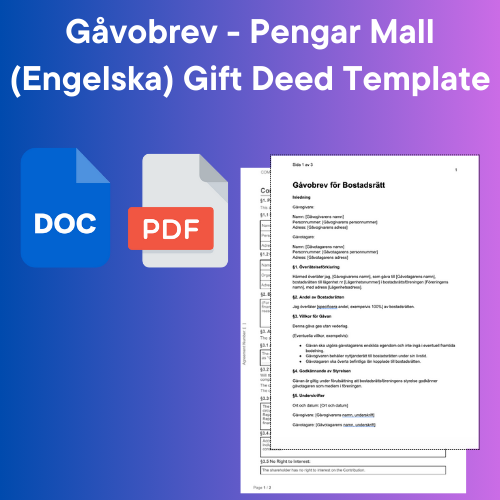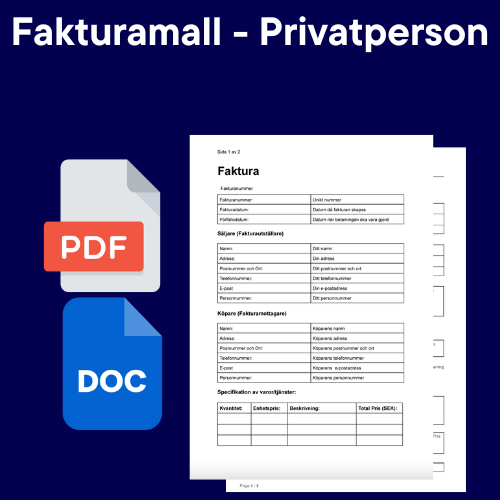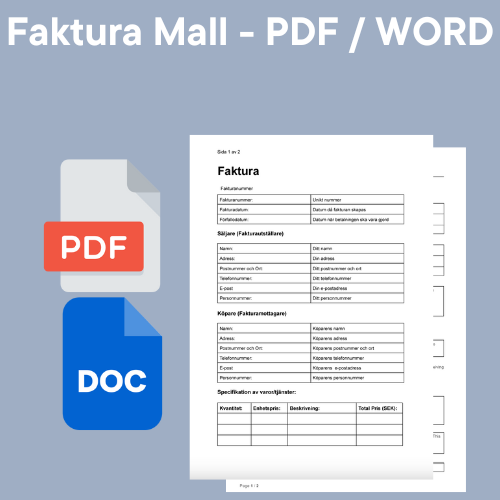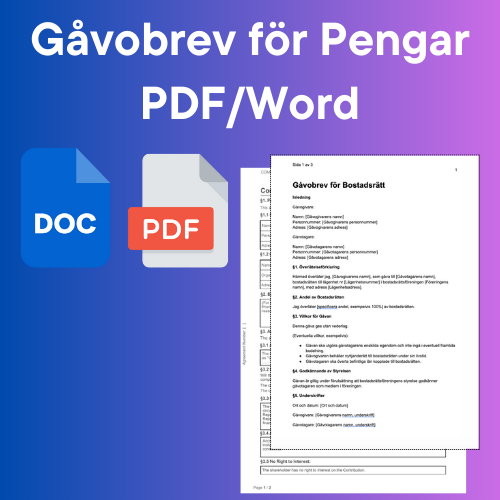Subletting FAQ: A Comprehensive Guide
Share
Subletting FAQ: A Comprehensive Guide
Table of Contents
- What is Subletting?
- Laws and Regulations Governing Subletting
- Common questions
- Practical examples and common pitfalls
- Tips for a Smooth Subletting
- Closing Words
What is Subletting?
Subletting means that a tenant or tenant leases their home to another person for a fixed period of time. This can happen for various reasons, for example work in another location, studies or other personal reasons.
Laws and Regulations Governing Subletting
- The Housing Tenancy Act (1991:614): Regulates many aspects of housing associations and condominiums, including subletting. According to ch. 7 Sections 10-11 of the Residential Tenancies Act require the approval of the association's board to sublease a tenancy. The board can refuse permission if there are factual reasons, but the decision can be appealed to the Rent Board.
- The Tenancy Act (Chapter 12. Land Code): Subletting of tenancies is regulated by the Tenancy Act. Here, the landlord's consent or permission from the Rent Board is required to sublet. If the rental takes place without permission, it may lead to the termination of the first-hand contract.
Common questions
- What is required to sublet my condominium? To sublease your condominium, you must have approval from the condominium association's board. The application should include reasons for the rental and the time period. Common reasons include temporary work in another location or studies.
- What happens if I rent out without permission? Renting out without a permit can lead to the forfeiture of your lease, which means you could lose your home. For condominiums, the association can also demand that the tenant move out if the letting takes place without the board's approval.
- How is the rent determined for subletting? For tenements, the rent may not exceed the first rent. For condominiums, the rent may include capital costs and a reasonable profit, but not be unreasonably high. If a secondary tenant pays an unreasonably high rent, they can claim a refund via the Rent Board.
- What rights do I have as a subtenant? As a secondary tenant, you have the right to a reasonable rent and access to a home in good condition. You also have the right to receive the rental contract in writing, which can help in the event of any disputes.
Practical examples and common pitfalls
Example 1: Unreasonable Rent
A common pitfall is that primary tenants charge too high a rent for subletting. This can lead to disputes and demands for refunds. In a legal review, the Rent Board can decide that an unreasonable rent must be refunded to the secondary tenant.
Example 2: Rental without Permit
Many condominium owners fail to apply for permission from the association's board. This can result in the rental being stopped and the tenant receiving a warning or, in the worst case, losing their tenant.
Example 3: Forfeiture of Lease Agreement
If a tenant sublets their apartment without permission, this may lead to the forfeiture of the first-hand contract. This means that the landlord has the right to terminate the lease and demand that both the primary tenant and the secondary tenant move out.
Tips for a Smooth Subletting
- Get written permission: Always get written permission from the landlord or housing association before subletting.
- Establish a written contract: A written contract between you and the subtenant can prevent many misunderstandings and disputes.
- Keep the rent fair: Make sure the rent is fair and within the legal framework to avoid repayment claims and legal disputes.
- Inform the subtenant of their rights: This includes the right to a fair rent and that the home is in good condition.
- Document the condition of the home: Take pictures and make an inventory list to avoid disputes about damage when moving out.
Closing Words
Subletting can be an excellent solution for those who temporarily need to move, but it is important to follow the applicable laws and regulations. By being thorough with permits and leases, both the primary tenant and the secondary tenant can protect their interests and avoid common pitfalls. For more detailed advice and forms, visit Fastighetsägarna and Bostadsförvaltning Sverige AB .




